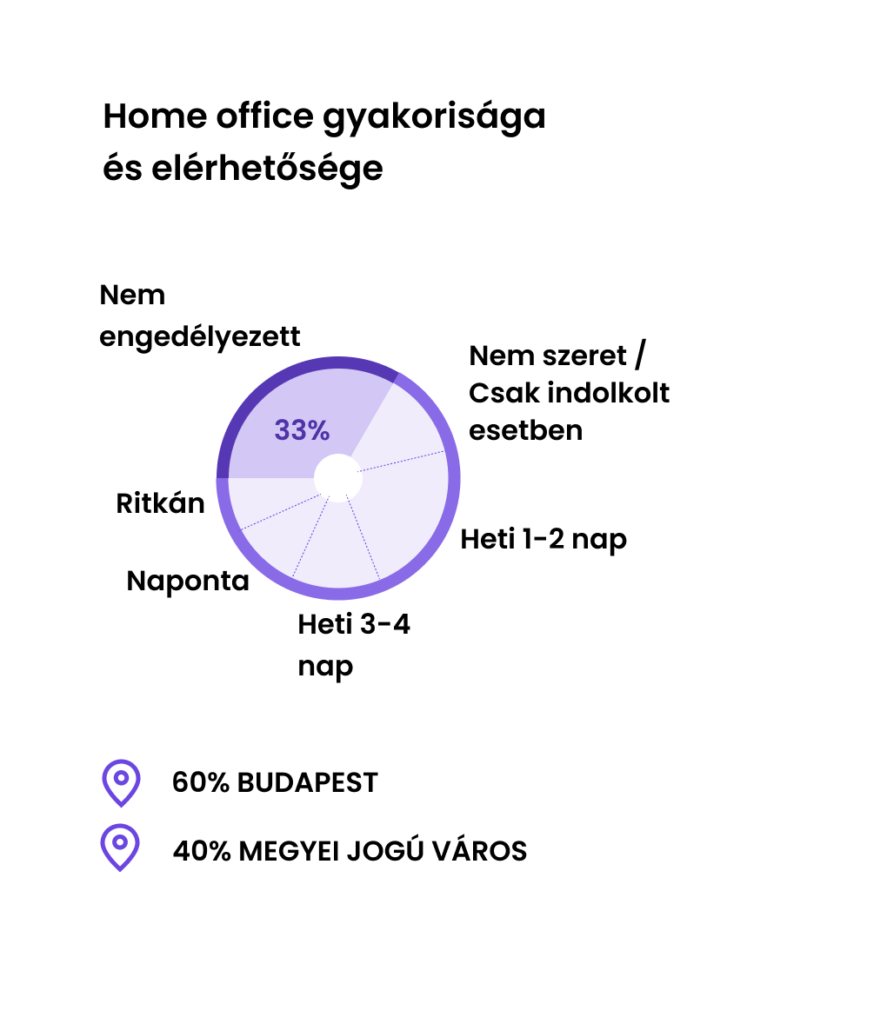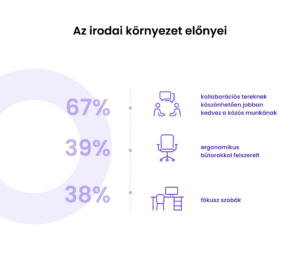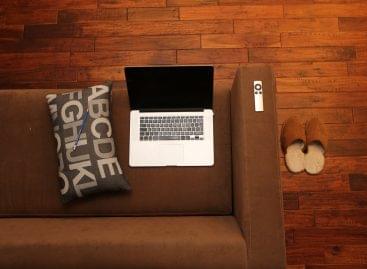A comprehensive study was conducted on the workplace environment of Hungarian office workers
In addition to the social experience, those employed in office environments who participated in iO Partners’ research on office use highlighted the easier implementation of daily routines and easier maintenance of work-life balance as advantages of working in an office. The survey also revealed that the strongest criteria for an ideal workplace environment are short travel time, good accessibility (by public transport), and community, company, and social experience.
 iO Partners conducted the research in June 2025 on a sample of 500 people; the quantitative online research examined the preferences of office workers among domestic white-collar workers.
iO Partners conducted the research in June 2025 on a sample of 500 people; the quantitative online research examined the preferences of office workers among domestic white-collar workers.
The prevalence of home office today
Five years after the radical reorganization caused by the COVID epidemic, it can be said that the hybrid working model has taken root, but has not become dominant in the Hungarian labor market. Nearly half (52%) of the surveyed Hungarian office workers in metropolitan areas work from home on some regular basis, while 48% work exclusively from an office. However, this proportion does not solely depend on the availability of home working, as only one-third of respondents stated that their workplace does not allow home office at all.
Generation-specific characteristics can also be observed in the trends, with Generation X, aged 45-60, being the least likely to work from home, while the 20-year-old age group is particularly active in using the home office option.
The ideal location for efficient work
 While working from home is a popular option among employees, it is still questionable how effective it actually proves to be. 39% of respondents believe that working from home is more efficient, while 20% prefer the office – but most (41%) do not feel a difference or find the benefits to be balanced. An interesting addition is that the majority of those who consider office work to be more efficient work in an office space with two or more people, and not in an open office design.
While working from home is a popular option among employees, it is still questionable how effective it actually proves to be. 39% of respondents believe that working from home is more efficient, while 20% prefer the office – but most (41%) do not feel a difference or find the benefits to be balanced. An interesting addition is that the majority of those who consider office work to be more efficient work in an office space with two or more people, and not in an open office design.
The research also examined how respondents see the benefits of a given work environment on efficiency: according to the less surprising results, discussions with colleagues and teamwork are significantly more effective in the office, while a quiet, undisturbed environment at home is better for independent work, and a more inspiring and pleasant home environment also increases efficiency.
What makes an office better than home
In addition to efficiency, an important aspect is why employees like to come to the office and what they see as the benefits of office work. In line with what was written earlier, the most important argument for working in an office was the presence of colleagues (61%). This component was rated highest among executives and members of Generation Z. The next item on the list of highlighted benefits of office work is the easier adherence to daily routine (41% value this benefit), and the top factor next to office days is the easier maintenance of work-life balance (30% highlighted this argument).
Characteristics of the ideal office
The research also outlined a description of what the ideal work environment is for respondents. Participants were able to name the most important things for them based on a list of ten. According to the results, the most important aspect is location – short travel times and good public transport could not be surpassed by any other factor (66% mentioned this). More than half of the respondents also highlighted an undisturbed, calm environment (56%) and good technical equipment in the office (56%). Every second “office worker” considers appropriate temperature control (50%) and the availability of comfortable, ergonomic furniture (49%).
Knowing employee expectations can be an absolute competitive advantage
The results of the research suggest that the domestic office culture has become bipolar: while working from home has become a stable player after the pandemic, in many cases and along several factors, office presence still represents a significant value in the eyes of employees.
However, in order to satisfy these needs, corporate decision-making must be increasingly aligned with employee expectations, since modern, well-functioning, sustainable workspaces cannot and should not be created above the heads of employees. The quality of the working environment not only stimulates the efficiency and creativity of the existing workforce, but is also a key factor in attracting new talent. Moreover, the task is significantly more complex than ever before.
Related news
Generations and perceptions: people from different generations like office work for different reasons
🎧 Hallgasd a cikket: Lejátszás Szünet Folytatás Leállítás Nyelv: Auto…
Read more >Despite the restructuring, hybrid working is the future, says Grant Thornton
🎧 Hallgasd a cikket: Lejátszás Szünet Folytatás Leállítás Nyelv: Auto…
Read more >Many more people would resign than last year if home office were abolished
🎧 Hallgasd a cikket: Lejátszás Szünet Folytatás Leállítás Nyelv: Auto…
Read more >Related news
Christmas shock in commerce: for the first time, we can pay with bank cards in fewer places
🎧 Hallgasd a cikket: Lejátszás Szünet Folytatás Leállítás Nyelv: Auto…
Read more >Hungarian Confectionery Manufacturers Association: trends in 2025 and prospects for 2026
🎧 Hallgasd a cikket: Lejátszás Szünet Folytatás Leállítás Nyelv: Auto…
Read more >Most grocery chains will be open until noon on December 24th
🎧 Hallgasd a cikket: Lejátszás Szünet Folytatás Leállítás Nyelv: Auto…
Read more >






